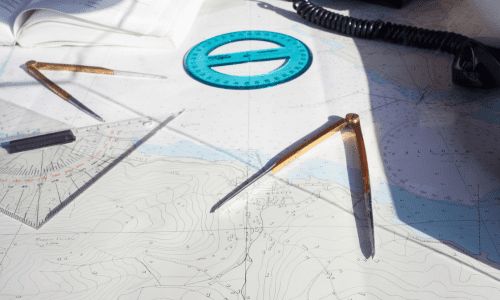Travel guide: The best sea routes on the Iberian Peninsula
The Iberian Peninsula, a place where the waters of the Atlantic and the Mediterranean meet, is a privileged destination for sailing enthusiasts. From the sun-drenched coasts of Spain to the dramatic cliffs of Portugal, each sea route offers a unique experience. At Crownline, we know the importance of a well-planned trip and we are here to guide you through the most breathtaking routes these coasts have to offer.
Exploring the Spanish coast
The Spanish coastline is a canvas of cultural diversity and natural beauty. From the calm waters of the Mediterranean to the wild waves of the Atlantic, each stretch of coastline tells a different story.
The Mediterranean Route: From Barcelona to Malaga
Starting in cosmopolitan Barcelona, this route takes you through some of Spain’s most iconic Mediterranean destinations. After leaving behind the famous beaches and Gaudi architecture, you head south along the Costa Dorada and Costa Blanca, passing historic cities such as Tarragona and Valencia. Each stop offers a unique blend of history, culture and Mediterranean cuisine. As you approach Malaga, the Costa del Sol greets you with its vibrant coastal towns and quiet hidden coves.
The Charm of the Atlantic: From Galicia to Gibraltar
This route is a journey of contrasts and discoveries. It starts in the lower estuaries of Galicia, where calm waters and green landscapes are an invitation to explore. As you head south, cities such as Vigo, Cadiz and Seville offer a rich mix of maritime history and culture. Finally, you reach Gibraltar, where the Mediterranean and the Atlantic meet, a place where history and nature live in harmony.
Discovering the Portuguese coast
Portugal’s coastline, known for its breathtaking cliffs and picturesque fishing villages, offers some of the most enchanting sea routes in Europe.
From the Algarve to Lisbon: A journey through southern Portugal
The journey begins in the sunny Algarve, known for its impressive rock formations, sea caves and golden beaches. Sailing north, you’ll pass charming towns such as Lagos and Sagres, where the history of Portuguese maritime discovery is alive at every turn. As you approach Portugal’s vibrant capital Lisbon, a mix of modernity and tradition awaits, with opportunities to explore historic monuments, Fado music and exquisite gastronomy.
Northbound: Lisbon to Porto
This segment of the route reveals the diversity of the Portuguese seascape. From Lisbon, the journey north takes you through the stunning coastline of Estoril, the wild beaches of Peniche and the historic city of Coimbra. Arriving in Porto, the city that gave its name to the famous Port wine, you’ll be greeted with stunning views of the Douro River and architecture that combines the ancient with the modern. It’s a route that offers a deep insight into the maritime soul of Portugal.
The Iberian Islands: Balearic and Canary Islands
The Spanish islands offer some of the most spectacular sea routes, with crystal-clear waters and unique landscapes.
Balearic Islands: A Mediterranean paradise
Sailing in the Balearic Islands is an experience in itself. Mallorca, the largest island, is famous for its vibrant nightlife and beautiful coves. Menorca, quieter, invites you to explore its unspoilt beaches and rich history. Ibiza, known worldwide for its parties, also offers quiet corners and breathtaking nature. Finally, Formentera, the smallest, is a haven of peace with beaches of turquoise waters and fine sand.
Canary Islands: Exploring the Atlantic
The Canary Islands are a perfect sailing destination all year round thanks to their mild climate. Each island has its own personality: from the dramatic volcanic landscape of Lanzarote to the lush jungles of La Palma. Tenerife and Gran Canaria combine beaches, culture and nature, offering a complete experience for any yachtsman.
Practical advice for sailors
Before setting sail on your maritime adventure, it is crucial to consider some essential aspects to ensure a safe and enjoyable voyage:
- Preparation of the boat: Make sure your boat is in top condition. Carry out all necessary checks, including engine, navigation equipment and safety devices.
- Knowledge of weather and tides: Find out about the weather conditions and tides expected along your route. Weather at sea can change quickly, so being prepared is essential.
- Route planning: Plan your route in advance, taking into account distances between stopping points and areas of refuge in case of emergency.
- Safety equipment: Always carry life jackets, a first aid kit, and communication equipment such as a marine VHF.
- Respect for the environment: Sail responsibly, avoiding damage to marine ecosystems and respecting protected areas.
Ideal sailing equipment: Crownline’s offering
At Crownline, we understand that the right equipment is key to an exceptional boating experience. We offer a variety of boats to suit any sailing style, from speedboats ideal for day trips to spacious yachts perfect for longer journeys. In addition, we have a range of accessories and boating equipment to ensure your journey is as comfortable as it is safe.
Other news that may interest you
- How to choose the right Crownline model for your lifestyle
- What to bear in mind when anchoring in Mediterranean coves?
- What makes Crownline a leader in recreational boating?
- Apps and technology that make sailing easier for beginners: Navigating has never been easier
- Tips for basic boat maintenance: Keep your boat ready to sail at all times

